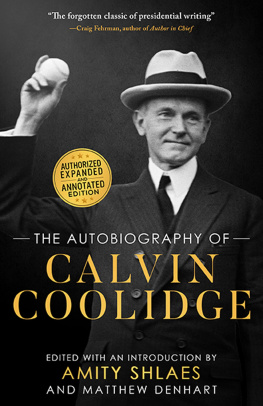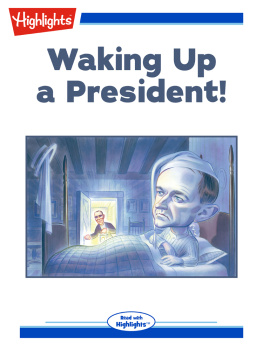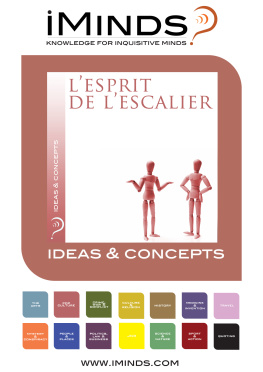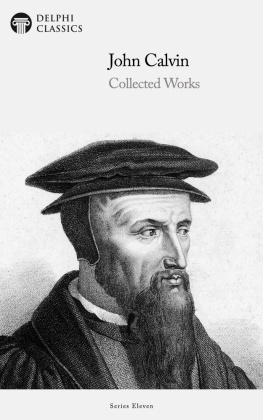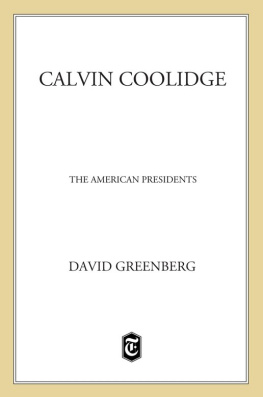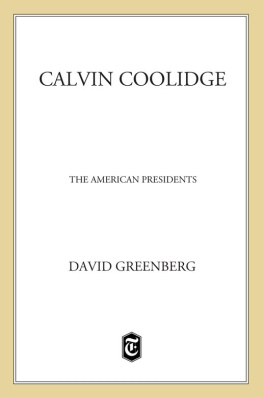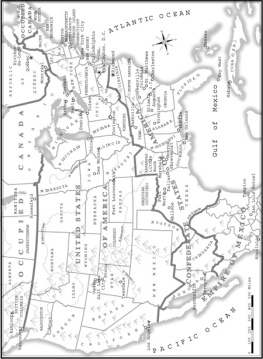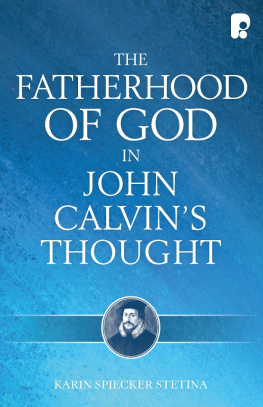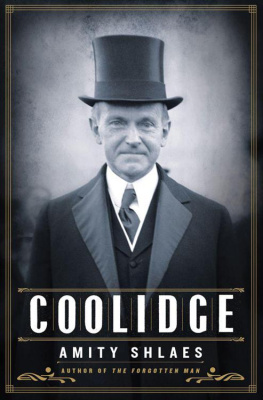Presidents loom over America, and so must their monuments. That was the conviction of the sculptor Gutzon Borglum as he laid his dynamite at Mount Rushmore in the summer of 1927. At Rushmore, Borglum would blast and hack at the mountain until it yielded up the visages of George Washington, Thomas Jefferson, Abraham Lincoln, and Theodore Roosevelteach face sixty feet tall. The president at the time, Calvin Coolidge, happened to be in South Dakota and rode up the mountain on a horse named Mistletoe to preside at the groundbreaking of Borglums gargantuan project. The sculptor, elated, and doubtless aiming to please the president, told the crowd that one day a mega-bust of Coolidge could join those of his four predecessors in the granite. This colossus is our mark, Borglum later said, the mark of a great civilization built by great men.
But Coolidge wanted no colossus. The film footage from the groundbreaking ceremony shows the thirtieth president duly delivering remarksand then turning off from the scene, rather too quickly The reporters present guessed that the fifty-five-year-old chief executive was worried about another matter. Coolidge had come to the presidency in 1923 upon the death of Warren Harding. Americans had given him a resounding victory when he ran for office on his own in 1924. Polls suggested Coolidge remained overwhelmingly popular leading up to 1928. Now, therefore, his fellow politicians and his party were pressuring Coolidge to announce he would run again.
A few days before his ride up Rushmore, Coolidge had sought to end the election discussion. The president asked his deputy to type up and hand out a statement to the reporters in attendance at the Summer White House, a temporary office in the high school at Rapid City. The statement was a single line: I do not choose to run for President in nineteen twenty eight.
The statement had not halted the pressure. The pressmen could not believe what they read and commenced pestering Coolidge, following him everywhere, even between the pines up to Rushmore. What leader turns his back on a guaranteed reelection? Surely, Coolidge did not mean what he wrote. Perhaps the president would reverse his position in a few daysa call from Republican leadership to South Dakota might change his mind. Or perhaps, the pressmen speculated, Coolidge suffered from some unannounced and grave maladypoor health could be the reason for Coolidges unexpected retreat.
The reason for Coolidges decision not to run was indeed healthnot the presidents health but the health of our democracy. In fact, Coolidges decision to walk away from Rushmore and his decision to walk away from the presidency were linked. They came out of his own conviction, one different from the sculptors. In the Coolidge conviction, the power of America lay not in great men but in great institutions, institutions in turn built on their own bedrock, the rock of principle. Because of those institutions, American citizens enjoyed rights and freedoms, he later wrote, that made them the peer of kings. Such people were best governed by principles, not potentates. The continued success of the nation depended on the popular commitment to those principles and institutions, not to men. The progress of America has been due to the spirit of the people, Coolidge said at Rushmore. Hero worship might make Americans forget that laws mattered more than men. Like Washington, who doubtless would have bridled at the sight of himself on the skyline, Coolidge believed presidents were there to preside, not rule. Modesty in a president was wisest.
Coolidge would make the case for the primacy of such principles in the autobiography in your hands. It is a great advantage to a President, and a major source of safety to the country, Coolidge wrote, for him to know that he is not a great man. The longer a president stayed in office, the closer he moved toward tyranny. Another safeguard, therefore, was to rotate the office holder. The chances of having wise and faithful public service are increased by a change in the Presidential office after a moderate length of time, Coolidge elaborated. In South Dakota and after, Coolidge stuck to his decision about the presidency. No amount of berating or cajoling changed his mind. Following the March 1929 inauguration of Herbert Hoover, he and Mrs. Coolidge rode the train back to New England, returning to their modest duplex on Massasoit Street in Northampton, Massachusetts.
The South Dakota summer was not the final time Coolidge rejected the grandiose. In 1931 the former president traveled to Marion, Ohio, to dedicate another vast monument, a marble-pillared shrine to his predecessor, Warren Harding. His own grave, Coolidge determined, would be different. When he passed away, in January 1933, the Coolidge family, respecting his wishes, laid the president to rest in the Coolidge row in the modest cemetery at his birthplace, Plymouth Notch, Vermont. The tallest stone in the row is that of Coolidges grandfather, Calvin Galusha Coolidge. Coolidges own gravestone stands no higher than that of his wife, Grace. The only sign that the grave is a former presidents is the presidential seal chiseled into the granite.
Coolidges studied modesty seems strange in our day. Perhaps that is one reason Coolidge gets scant space in our history books. Some authors take Coolidges restraint for weakness and make a stereotype of him: Silent Cal, a Puritan throwback, an arch-conservative, a man with no skill in newer media. Others treat the president from New England as a kind of seat warmer between giants such as Theodore Roosevelt and his cousin Franklin. These authors dismiss Coolidge as an accident, emphasizing that only the death of Harding put him in office in the first place. Still others blame Coolidge for causing the Great Depression of the 1930s, though the evidence for this allegation is missing. As often as anything else, Coolidge is simply forgotten.
But Coolidge should not be forgotten. For in many respects Coolidge confounds stereotype. As governor, for example, the arch-conservative Coolidge backed a number of progressive measures and counseled against legislating as an ideologue: Dont hesitate to be as revolutionary as science. Dont hesitate to be as reactionary as the multiplication table. Perhaps because he knew what it was like to live in Plymouth, to which the railroad had not chosen to come, this old-fashioned president exhibited a modern passion for technology and networks. Because so few radio recordings exist, few today know that Coolidge starred in what is today known as Franklin Roosevelts medium, radio. Coolidges nasal voice cut through the airwaves like wire, it was said. As president, Silent Cal gave hundreds of press conferences and established a record for speechmaking in the last two decades, the New York Times reported in February 1929. Coolidge devoted much time to his speeches and only rarely allowed others to write them. You will find several of his most important speeches in the appendix to this edition of his autobiography.
The extent to which commentators distort Coolidge is evident in the way they cite one of his more famous lines: The chief business of the American people is business. Coolidges detractors seize on this statementwhich they often misquote as the business of America is businessto portray the president as a tool of big business, concerned with nothing but material success. They fail to mention that in the same speech, delivered in 1925, Coolidge said, The chief ideal of the American people is idealism. He added that Americans are not absorbed by material motives, that there are many other things that we want very much more. In another speech, Coolidge acknowledged that we live in an age of science and of abounding accumulation of material things but also said that the things of the spirit come first.

